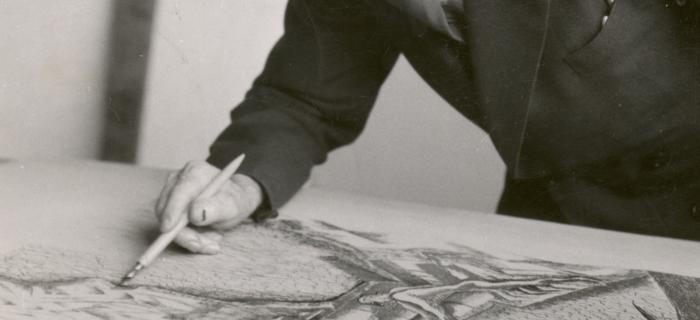DÉCOUVREZ LES 14 MUSÉES DE LA VILLE DE PARIS
Main menu

The volume of graphic work, drawings, gouaches and watercolours, with 1,200 works listed to date and the annotated catalogue currently being drawn up, bear witness to the sculptor’s attachment to this mode of expression.
“Draw”, he confided to his wife Valentine. “It's only drawing that can get you back on your feet. You can't give in to boredom or sadness when you're drawing." In the early days, Zadkine lived more easily from selling his graphite drawings, executed on the spot, than from selling his sculptures. Enlisted during the Great War, assigned to the Russian ambulance corps and then wounded, he produced a remarkable collection of forty or so works on paper, drawings and watercolours, depicting barracks, the wounded and hospitals.
In the 1920s, he produced a large number of gouaches: on his return to Quercy, he turned his attention to rural and village scenes, followed next by figures of nudes and faces, strongly structured by colour. Around 1928, he was inspired by Antiquity to create mythological scenes also enhanced by colour. In the 1950s, he produced an enormous number of ink drawings of groups of figures, very similar to the sculptures of this era.
The 1960s saw the emergence of abstract gouaches and drawings where the human figure was encircled by a network of lines.